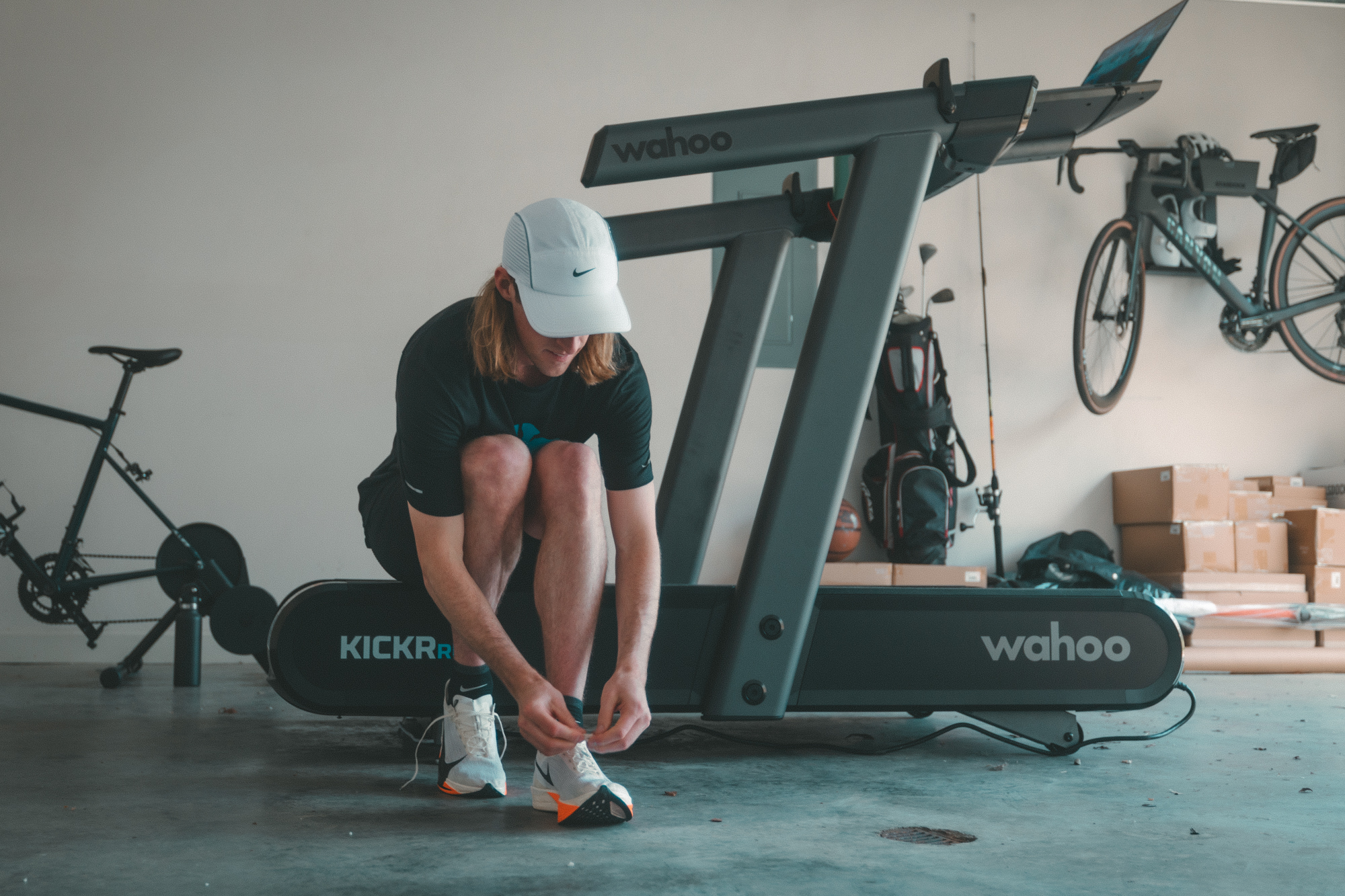Treadmill Training Workouts: Master Your Pace with Structured Routines
While there are many things I love about using the treadmill for training, the controlled environment for workouts is near the top of the list. No excuses, less variations in pace needed to accommodate heat, humidity, ice, or even those insanely windy days.
Taking them to the Wahoo KICKR RUN is next level because the RunFree Mode is going to teach you even more about learning to hit your own pace and not just having the machine set it and forget it.
4 Essential Treadmill Workouts for Runners
The 12-3-30 Walking Workout
I know you’re a runner, but sometimes you aren’t allowed to run (think injury or recovery) and yet you still want to break a sweat. Since this workout took social media by storm, I think it’s important to cover.
If you’re training for an ultra with a lot of vertical, this is actually an ideal workout to add to your weekly routine. In fact, you could do a normal weekday run outside and then finish with this.
Created by Lauren Giraldo this is a super straightforward or straight up workout that is going to fire up the glutes.
12-3-30 Workout Parameters:
- Incline: 12%
- Speed: 3 mph
- Time: 30 minutes
Time Saver HIIT Run
At some point every year, I have a few athletes without enough time to fit in a full speed work session, so we pivot to a shorter, more intense HIIT workout.
HIIT stands for high-intensity interval training, which is alternating between short, hard bursts of work followed by rest or lower-intensity exercise. Because of the intensity, these workouts are usually 30 minutes or less, which make them easy to fit into most schedules.
I like this one because it’s a chance to play with various paces.
Each effort is followed by 30 seconds of light jogging or walking. Each round is followed by 3 minutes easy.
HIIT Workout Structure:
- Dynamic Warm Up followed by 5-10 minutes easy running
- Effort 1: 90 seconds at 10k pace
- Effort 2: 60 seconds at 5K pace
- Effort 3: 20 seconds at mile effort
- Repeat 2-3 times
4×4 Intervals: VO2Max Development
Here’s how a running coach might explain it:
This workout is all about cranking up your VO2max – basically how efficiently your body can use oxygen when you’re really pushing it. The smart folks at the Norwegian University of Science and Technology put this together, and what many love about this workout is how clean and simple it is.
Here’s the key thing I tell all my athletes: when you finish that fourth interval, you should feel like you’ve got exactly one more good effort left in the tank. Not two, not zero – one.
That’s the magic zone right there. You’re working hard enough to really challenge your aerobic system and force those adaptations we’re after, but you’re not completely torching yourself. I’ve seen too many runners go out there and blow up on interval workouts, thinking they need to leave everything in the workout. This approach is smarter than that.
4×4 Interval Workout Breakdown:
- Dynamic Warm Up – Followed by 10 minutes easy running
- Interval – Sprinting for 1 minute at 85-90% Max HR (heavy breathing, but not so hard you can’t finish the minute)
- Active Recovery – 3 minutes of light jogging or walking
- Repeat Intervals 4 times
- Finish with easy running for 5-10 minutes
Goal Pace Workout: Marathon Training Essential
Goal pace workouts are the bread and butter of marathon training – they teach your body what race pace should feel like so it becomes second nature on race day. But there’s no one-size-fits-all workout for how much goal pace running you should do.
Your workout structure depends entirely on where you’re at in your training journey.
Beginner Structure: If you’re newer to marathoning or coming back from time off, you might start with something like 3×1 mile at goal pace with an easy mile between each repeat.
Advanced Structure: Meanwhile a more experienced runner deeper in training, may have built up to 3×4 miles at marathon goal pace with 5 minutes easy between.
Maximizing the Treadmill for Goal Pace Work
The key here is how you utilize the treadmill. The treadmill often makes goal pace workouts easier because you can set the pace and then settle in, no more mental effort.
Again the KICKR RUN leaves this open…do you want to set the pace or do you want to practice holding a steady effort by turning on RunFree Mode and selecting a section of the course for the treadmill to auto adjust incline and decline.
Obviously the second option is harder and what I hope you’ll pick, but both are winners. Somedays you mentally need to set it and go, so choose what works best.



